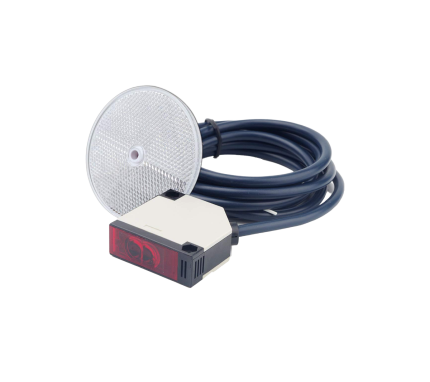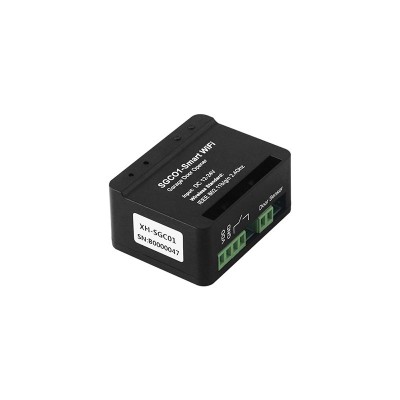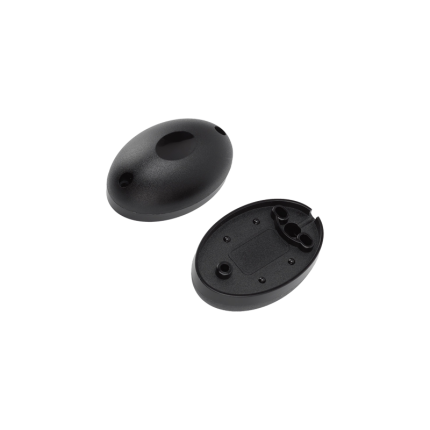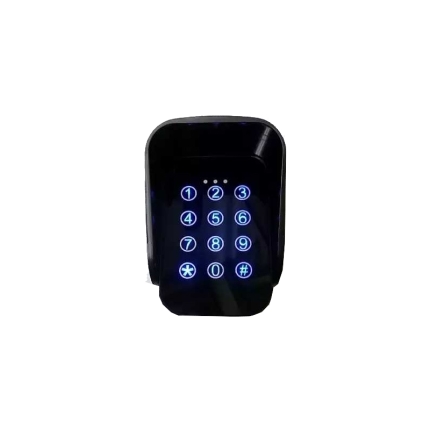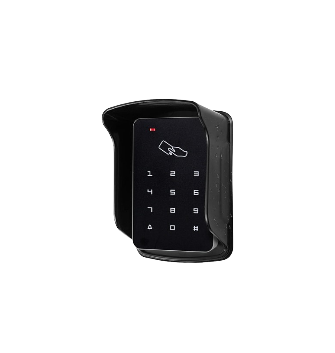Shop
Safety Sensor S300
Ship or pick up from our office.
Safety Sensor S300
A gate opener safety sensor is a crucial component of automated gate systems designed to prevent accidents and damage by detecting obstructions in the gate's path.
These sensors, often photoelectric, use an infrared beam to monitor the area and trigger the gate to stop or reverse if something is blocking its movement.
How it works:
-
Transmitter and Receiver:A safety sensor typically consists of a transmitter that emits an infrared light beam and a receiver that detects the beam.
-
Obstruction Detection:When an object, person, or vehicle interrupts the beam, the receiver signals the gate operator to stop or reverse the gate's movement.
-
Safety Feature:This mechanism prevents the gate from closing on anything or anyone, ensuring safety and preventing potential damage.
Types of Safety Sensors:
-
Photoelectric Sensors (Photo Eyes):These are the most common type, using an infrared beam to detect obstructions.
-
Safety Edges:These sensors are typically placed along the edge of the gate and trigger a stop or reverse when they encounter pressure.
-
Induction Loops:These sensors are embedded in the ground and detect vehicles as they pass over them, triggering the gate to open or close.
Importance:
-
Safety:The primary function is to prevent accidents and injuries by stopping or reversing the gate when an obstruction is present.
-
Preventing Damage:By detecting obstructions, these sensors help avoid damage to the gate, vehicles, or anything else in its path.
-
Compliance:Safety sensors are often required for automated gates to meet safety regulations and standards.
Common Issues:
-
Misalignment:If the sensor is misaligned, the infrared beam may not reach the receiver, causing the gate to malfunction.
-
Obstructions:Debris, dirt, or other obstructions can interfere with the beam and trigger false alarms.
-
Sensor Failure:Like any electronic device, sensors can fail over time, requiring replacement.
Wireless Keypad Access Control KW200
Wireless Keypad Access Control KW200
*Backlight *433 MHz *Finger Touch *Rain coverWireless keypad access control systems replace traditional keys with a digital PIN code entry for building access, eliminating the need for physical keys and enhancing security.
These systems often include features like remote management via smart devices, audit trails of access events, and integration with other security systems like intercoms.
Here's a more detailed breakdown:
Core Functionality:
-
Keyless Entry:Users enter a unique PIN code into a keypad to unlock a door or gate.
-
Wireless Communication:The keypad communicates wirelessly with a receiver or controller, eliminating the need for extensive wiring.
-
Remote Management:Many systems allow administrators to manage access permissions, view audit trails, and adjust settings remotely via a smartphone app or computer.
-
Integration:Some systems can integrate with intercoms, surveillance cameras, and other security components for a more comprehensive solution.
Key Features:
- PIN Codes: Users are assigned unique PIN codes for entry.
- Proximity Cards/Fobs: Some systems also support access via proximity cards or fobs for users who prefer that method.
- Audit Trails: The system can record and store data about who accessed the door, when, and how, providing a valuable security record.
- Weatherproof and Durable: Many outdoor keypads are designed to withstand harsh weather conditions and vandalism.
- Backlit Keypads: Backlit keypads make it easier to use the system in low-light conditions.
Types of Wireless Keypad Access Control:
- Stand-Alone Systems: These systems are self-contained and don't require connection to a central system.
- Integrated Systems: These systems are part of a larger access control or building management system.
- Wired and Wireless Hybrid: Some systems combine wired and wireless components for added flexibility.
Benefits:
- Enhanced Security: Eliminates the risk of lost or stolen keys.
- Increased Convenience: Users don't need to carry keys.
- Improved Auditability: Tracks access events for security monitoring.
- Remote Management: Allows for easy administration and control.
Keypad Access Control K110V2000
Keypad Access Control K110V2000
*Waterproof Version *EM - RFID card/tag reader *Finger Touch *Backlight *DC 12 V *1000 Users *Doorbell button *Rain Shield Cover IncludedThe Keypad Access Control K110V2000 is a standalone access control system designed for single-door access, typically used for residential or small-to-medium commercial buildings.
It allows users to unlock the door using either a proximity card, a PIN code, or a combination of both.
Here's a more detailed breakdown:
Key Features:
- Multiple User Capacity: It can support up to 1000 users.
- Multiple Access Methods: Users can unlock the door using RFID cards, PIN codes, or both.
- Standalone Operation: It functions independently, without needing to be connected to a central computer.
- Wiegand Input/Output: It can connect to an external card reader (Wiegand 26 input) and a controller (Wiegand 26 output).
- Tamper Alarm: Includes a tamper alarm for added security.
- Backlit Keypad: The keypad is backlit, making it easier to use in low-light conditions.
- Short Circuit Protection: The output is automatically turned off if there's a short circuit in the electric lock or alarm output.
- Waterproof: Some models, like the V2000-C, are waterproof, making them suitable for outdoor use.
- Easy Installation and Programming: The system is designed for straightforward installation and programming.
- Doorbell Input: Some models include a doorbell input.
- Adjustable Settings: Features like door output time, alarm time, and door open time can be adjusted.
Applications:
- Residential Buildings: Ideal for controlling access to apartments or individual homes.
- Small to Medium Businesses: Suitable for offices, shops, and other commercial spaces.
- Warehouses and Factories: Can be used to manage access to secure areas.
- Other Applications: Laboratories, banks, and even prisons.

